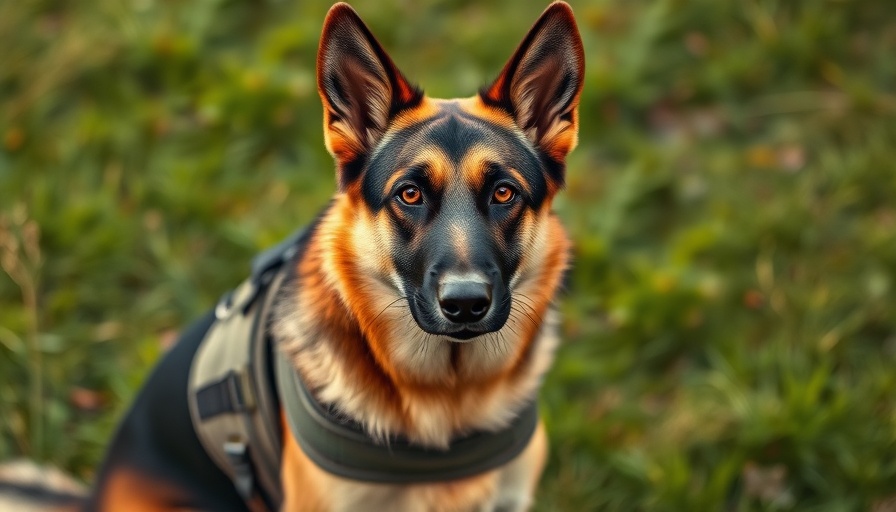
Understanding the Unseen Heroes: Ex-Military Dogs
Ex-military dogs stand among the bravest companions of our armed forces; they have seen and experienced the rigors of military life alongside our soldiers. These dogs contribute significantly in high-stakes environments, excelling in roles such as search and rescue, detection, and patrolling. Now, as they transition from service to civilian life, these canine heroes are ready for one of the most important roles of their lives—becoming beloved pets and family members.
The Types of Breeds That Serve
The U.S. Military Working Dog Program predominantly employs breeds like the Belgian Malinois, celebrated for their quick intelligence and robust physical capabilities. They are not alone—Dutch Shepherds are gaining popularity for their work ethic and adaptability in various military tasks. These breeds' natural instincts make them exceptional candidates, not just for service, but also for adoption, where their loyal disposition shines through.
Traits and Behaviors: A Deeper Look
Adopting an ex-military dog comes with its unique joys and challenges. These dogs come with an inherent discipline honed through rigorous training. They are typically obedient, alert, and confident. Nevertheless, the transition to home life can be complex, as some ex-military dogs may experience separation anxiety or face challenges related to post-traumatic stress. Understanding these behaviors is crucial, as is providing the patient support they need while they adjust to a new environment.
Embracing Special Considerations for Adoption
Before opting to adopt an ex-military dog, prospective owners should be prepared for an ongoing commitment to provide consistent training and socialization. Many of these dogs thrive in structured settings, thus a sudden change in routine can be disorienting for them. Furthermore, adopting a dog requires ensuring that the living environment suits their needs, especially for families with young children or existing pets. A thorough assessment during the adoption process is paramount to foster a seamless match between the dog and its new home.
The Journey of Adoption: What to Expect?
The path to adopting an ex-military dog entails various steps, including thorough screening involving both the potential owners and the dogs. This process ensures compatibility, addressing behavioral norms and specific needs. It’s important to take time to learn about each dog’s history, preferences, and any potential issues that may influence their transition. Those interested in adoption should take proactive steps to seek detailed insights into the behavior and character of the specific dog they wish to welcome into their lives.
Potential Solutions and Benefits
Many reports highlight the positive impact of ex-military dogs on mental health, particularly for veterans dealing with PTSD. These loyal companions can provide emotional support, security, and companionship, making them invaluable in promoting well-being. Understanding the advantages of adopting one of these dogs extends beyond personal benefit; it is a way to honor their service, providing them with the respect and love they rightfully deserve.
Making an Informed Decision
Pursuing the adoption of an ex-military dog is not just an act of charity; it’s a chance for growth for both the adopter and the dog. With patience and informed guidance, these bonds can lead to fulfilling, lifelong partnerships that offer emotional rewards.
Consider joining the discussion in your community about adopting ex-military dogs; share your experiences or thoughts with your peers. This engagement deepens the understanding and appreciation of the sacrifices these remarkable dogs have made. Remember, an adoption journey is not one taken lightly, and in the end, it’s about forming genuine connections.
 Add Row
Add Row  Add
Add 




 Add Row
Add Row  Add
Add 

Write A Comment